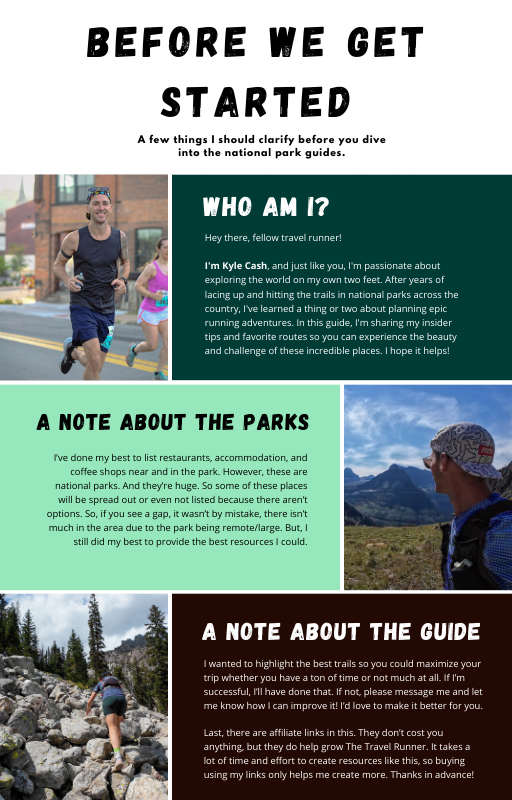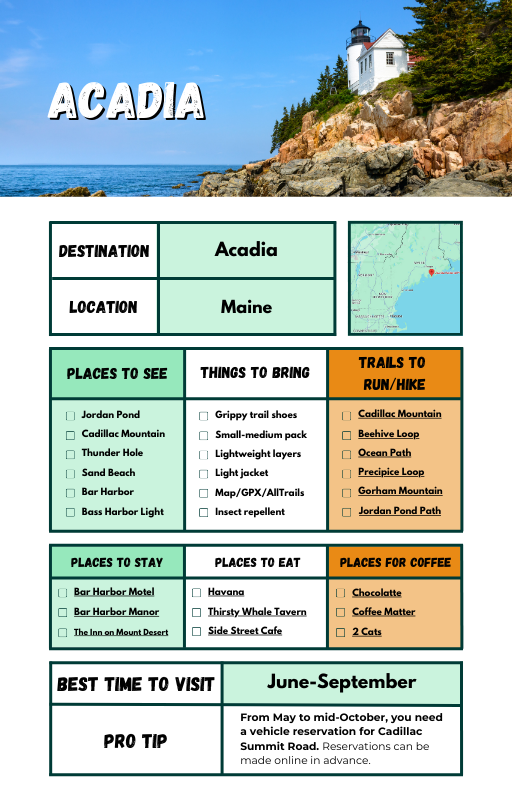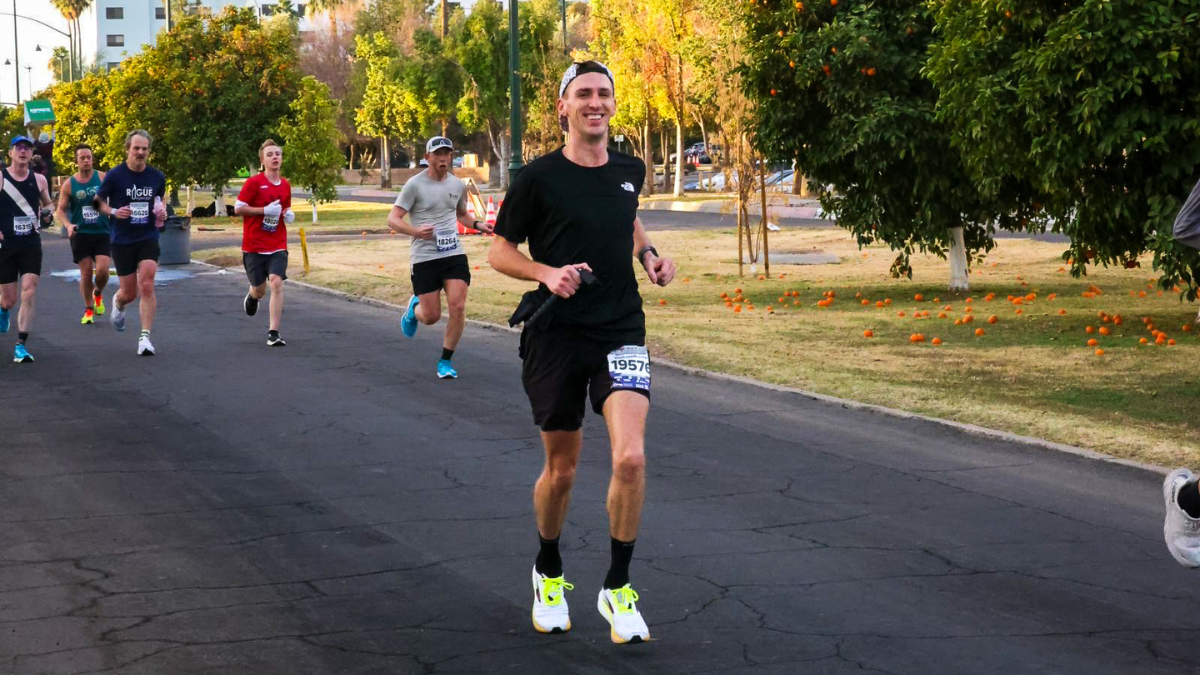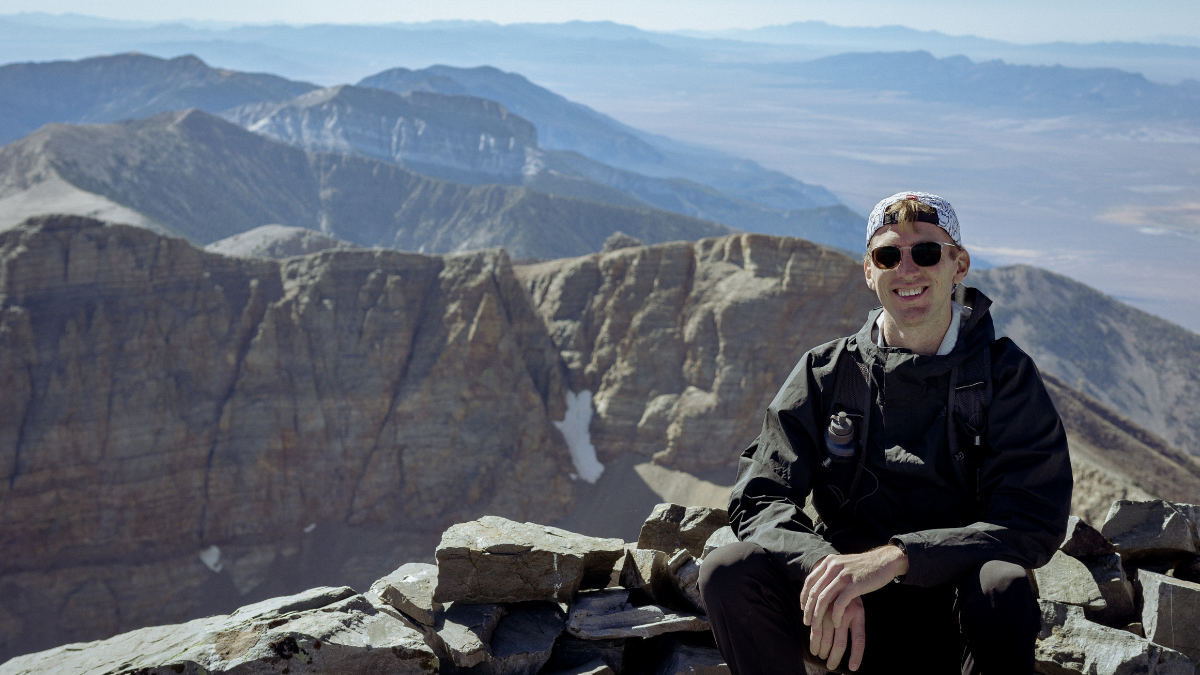Destinations
Trail running in national parks just hits different.
One minute you’re grinding up switchbacks, and the next you’re bombing down singletrack with views so good you almost forget how bad your quads are wrecked. Almost.
But, not every park is great for runners. I’ve experienced it firsthand (I’m looking at you Indiana Dunes).
Some are better for sightseeing (or sightrunning), some are too rugged to even run, and some are insanely crowded, and others just aren’t worth it.. And that’s why I put together this list of the best national parks for trail running — places you can actually move, not just hike.
So, if you’re looking to plan your next runcation spot, these national parks are definitely some you should consider.
8 Best National Parks for Trail Running
Table of Contents
8. Grand Teton National Park
The first time I ran in Grand Teton, I honestly couldn’t stop staring at the mountains.

They just shoot straight out of the ground — no foothills, no warning. The first time I saw a photo of the mountainscape, I knew I had to visit.
In 2024, I got that chance with my stepmom and my dad. And it fully delivered.
We didn’t have a ton of time in the area, but man did we maximize it. The Delta Lake Trail stands out as one of my favorites.
The singletrack, then climbing over giant boulders before destroying your quads on a steep climb… only to get one of the most gorgeous views in the US (at least, in my opinion).

Why I love it for running:
You get a mix that’s rare — buttery, runnable singletrack in the valley and quad-busting alpine climbs if you want to suffer a little. That’s a sweet spot for me: a place where I can open up one day and then get humbled the next. Plus, add amazing views to the mix and it’s hard to beat.
My top trails here:
- Delta Lake Trail — 7.4 miles, ~2,300 ft gain. The climb is a grind, but when you crest and see that turquoise water with the Tetons towering behind it, it’s one of those jaw-drop moments that makes the burn worth it.
- Jenny Lake Loop — 7.5 miles, ~600 ft gain. Totally different vibe — flat(ish), smooth, and just pure fun. Better as an easy run.
Best season to go:
Late June–September, once the snow has cleared from the higher alpine routes.
Kyle’s tip:
Wear a durable pair of trail shoes. The singletrack is great for most types, but once you start climbing over boulders and scrambling up steeper grades near the top, you’ll want something more durable and with better grip.
7. Acadia National Park
Acadia was one of those parks that surprised me.
I went in thinking “coastal Maine, some pretty views,” but man — the trails were unforgettable, too.
You’ve got rugged shoreline, granite peaks, and singletrack weaving through forests that feel totally different from most U.S. national parks.
The standout for me was Cadillac Mountain.

It’s famous for being the first place in the U.S. to see the sunrise certain times of the year, and running up it felt like the best way to see that sunrise. The climb is no joke — rocky, exposed, and it’ll burn your legs out quick — but the payoff at the summit is a chef’s kiss.
Once that sunrise comes up, you’ll forget about the difficulty.

Why I love it for running:
Acadia gives you variety you don’t often get in one place.
One morning you can run along coastal trails with the ocean crashing beside you, and the next you’re grinding up granite ridges with big views back across the islands. It’s runnable, challenging, and ridiculously scenic all at once.
My top trails here:
- Cadillac Mountain South Ridge Trail — ~7 miles, 1,350 ft of gain. Long, steady climb with sweeping ocean views at the top.
- Gorham Trail — 6 miles, 1,200 ft of gain. Hugging the shoreline with constant photo-worthy spots. Great intro run to the area.
Best season to go:
Late spring through fall. Summer is gorgeous but expect crowds. Fall gives you the foliage + crisp temps combo that’s hard to beat.
Kyle’s tip:
Start early. Not only do you beat the crowds, but you get those golden morning views that make Acadia feel otherworldly. Also, pack a headlamp for sunrise runs.
6. Zion National Park
What struck me most about Zion is how different it feels depending on when you’re there.
I’ve run it in the blazing summer when the heat bakes you from the second you step out of the car, and I’ve also been there in winter when it’s crisp, quiet, and almost feels like a completely different park.

Either way, the scenery is unreal.
Towering red cliffs, narrow canyons, and that rugged desert energy you don’t get in many other national parks. Everyone talks about Angel’s Landing — and yes, it’s iconic — but let’s be honest: it’s not a runner’s trail. Too crowded, too dangerous.
My favorite is the Watchman Trail. Not too long, but a runnable uphill, loop, then fun downhill you can bomb down. But you could spend a day running a few of the trails in Zion.

Why I love it for running:
Zion gives you contrast.
Some trails let you cruise through sandy singletrack in the valley, others throw steep climbs and slickrock at you until you’re gasping. That balance between runnable stretches and lung-busting climbs is exactly what I look for.
My top trails here:
- Watchman Trail — 3.3 miles, ~500 ft gain. Short, punchy, and a great warm-up loop right near the visitor center.
- Angels Landing Trail — 4.3 miles, 1,800 ft gain. Not really runnable, but it’s one of the most epic trails in the US, so worth it.
- Scout Lookout — 3.6 miles, 1,100 ft gain. A helluva climb at the start, but a beautiful view from the viewpoint.
Best season to go:
Spring or fall are the sweet spot, but winter has its perks too — fewer people, cooler temps, and a different kind of solitude. Summer? Brutal, unless you’re ready for that heat.
Kyle’s tip:
Pack way more water and electrolytes than you think you’ll need. Trust me on this one.
5. Redwood National Park
The first time I ran among the Redwoods, I felt like I’d stepped onto another planet.
These trees are massive — not just tall, but wide enough to make you feel like you’re running through some ancient cathedral. And honestly, it’s hard not to slow down just to look up in awe.

My favorite trail, hands down, was the Tall Trees Trail, and it’s a must do in my opinion.
Aptly named because your neck will feel strained from looking up the entire time. But most of the trail is just smooth and I just let go and let my legs open up. The initial part is downhill, so you can just bomb down it, then follow it up with a loop in the middle before climbing back up the way you came down.

That’s not it, though. It’s worth hitting just more than these trails in Redwood.
Why I love it for running:
Redwood is one of the few national parks where you can rack up real miles on soft, runnable trails. The forest floor is spongy, the grades are manageable, and the shade from the trees makes it a great option year-round. Plus, there’s something about moving under giants that makes every mile feel special.
My top trails here:
- James Irvine Trail to Fern Canyon — ~11 miles round trip. A mix of dense redwood forest and the jaw-dropping Fern Canyon, where walls of green tower above you (you can also start this closer and make it closer to a 4-5 mile trip).
- Prairie Creek Trail — ~8 miles. Classic redwood singletrack with steady grades that let you settle into a rhythm.
Best season to go:
Spring and fall are ideal — fewer crowds and mild temps. But honestly, the coastal climate means it’s runnable most of the year.
Kyle’s tip:
Bring a good, light rain shell. The coast can turn damp and misty without warning, and you don’t want to be caught unprepared.
4. Glacier National Park
Originally, I had Glacier at #1.
In my video, that’s exactly where it landed. And honestly, based on scenery alone, it deserves that spot — the park is just stunning. Jagged peaks, turquoise lakes, sweeping valleys — it’s hard to top.

But here’s why I moved it down on this list: grizzlies. They’re a real factor here, and for runners especially, that risk changes the experience. When I ran in Glacier, I carried bear spray, made noise, and was constantly aware of who (or what) might be around the next bend on the Highline Trail or Avalanche Lake trails.
It didn’t ruin it — far from it — but it made me rethink where I’d place it for runners compared to other parks.

Why I love it for running:
Glacier gives you massive alpine passes and runnable lake trails in the same day.
It’s adventure running at its finest, with a wild edge that reminds you you’re not just out for a jog — you’re in true backcountry at points.
My top trails here:
- Highline Trail — ~14 miles point-to-point, ~2,300 ft gain. Famous for a reason. Exposed, epic, and nonstop views of the Garden Wall (we went to the halfway point and turned around).
- Avalanche Lake Trail — ~5.9 miles, ~750 ft gain. A shorter but gorgeous option that still delivers big scenery and an epic lake.
Best season to go:
Summer to early fall, once the snow clears and alpine trails are open.
Kyle’s tip:
Run with others if you can, and don’t skimp on bear safety — spray, bells, noise, the whole deal. The beauty here is unmatched, but the grizzlies are very real.
3. Grand Canyon National Park
I remember visiting the Grand Canyon for the first time and just expecting it to be one of those classic, overhyped parks.
Boy, was I wrong.

The Grand Canyon doesn’t only deliver. It overdelivers. It just takes up every part of your vision no matter where you look. The scale is something that you just can’t understand until you’re there.
I haven’t taken on the Rim-to-Rim or R2R2R yet, but they’re on my bucket list. But I did get to do some running on the Bright Angel Trail on my visit and it was the little taste I needed. The scale, the heat, and the fact that every step down meant a brutal climb back up… I loved it.

Why I love it for running:
The terrain and environment forces you to slow down. But that means you get more time to enjoy the scenery, which is the entire point you’re there anyways.
My top trails here:
- South Kaibab to Skeleton Point — ~6 miles round trip, ~2,000 ft gain. Short, steep, and a great way to taste what the Canyon offers.
- Bright Angel Trail — Up to 12 miles round trip to Indian Garden, ~3,000 ft gain. A bit more gradual, with water access, but don’t mistake it for easy.
- Rim-to-Rim-to-Rim (R2R2R) — ~47 miles, ~11,000 ft gain. The crown jewel. I haven’t run it yet, but it’s been on my radar for years.
Best season to go:
Spring and fall are ideal. Summer in the inner canyon is brutal, and in winter, snow and ice on the rim can make things sketchy.
Kyle’s tip:
Don’t underestimate the climb out. However far you go down, double the effort (and time) to get back up. Start early, bring way more water than you think you’ll need, and respect the Canyon — it’s gorgeous, but it’ll chew you up if you’re careless.
2. Rocky Mountain National Park
If Glacier is a little too wild with its grizzlies, Rocky Mountain National Park feels like the perfect balance (though recent wolf sightings makes it a bit intimidating) — big mountains, endless views, but without quite as much danger.

When I ran here, the first thing I noticed was how runnable it felt compared to places like the Whites or even the Tetons (which I had just come from).
You can actually open up your stride on a lot of these trails, which is a nice change of pace if you’re used to picking through rocks and roots all day.

Why I love it for running:
The mix of runnable singletrack and big alpine climbs makes RMNP one of those parks where you can get whatever kind of workout you want. Some days you can push the pace, other days you can grind it out at altitude and feel that burn.
My top trails here:
- Bear Lake to Fern Lake Loop — about 12 miles with just under 2,500 ft of gain. A classic loop with lakes, forest, and mountain views.
- Sky Pond Trail — ~9 miles, 1,700 ft gain. Technical enough to stay interesting but not overwhelming, with a killer alpine lake payoff.
Best season to go:
July–September, once the high-elevation snow has melted. Earlier in the year can still mean snowy, icy sections.
Kyle’s tip:
Don’t underestimate the altitude here. Most runs start above 8,000 feet, and you’ll feel it quick. Take your time, keep fueling, and enjoy the fact that you can actually run much of this terrain.
1. Olympic National Park
Olympic is wild in the best way possible.
You’ve got mountains, rainforest, and rugged coastlines all packed into one park — and that variety makes it one of the most unique trail running destinations in the U.S.

When I first ran here, I couldn’t believe how different it felt from one section to the next. One day you’re winding through mossy rainforest that looks straight out of a movie set, and the next you’re climbing alpine trails with jagged peaks popping out in every direction. I remember saying in my video that if you want a park that truly has everything, this is it — and I still stand by that.
From Klahane Ridge to Heart O’ the Forest trail to Sol Duc Falls, there wasn’t a trail I didn’t enjoy. Olympic, it blew me away. Loved every part of it.

Why I love it for running:
Olympic gives you options. You can cruise on lush, shaded trails in the rainforest when you just want to log easy miles, or head up into the mountains if you want a sufferfest with big climbs and bigger views.
Plus, the coastal trails are something totally different — running with waves crashing beside you is an experience you don’t get in most parks.
My top trails here:
- Klahane Ridge – Multiple distances you can choose here as there are various starting points. But expect to climb.
- Sol Duc Falls/Lover’s Lane Loop – 6 miles through lush forest with an epic waterfall at the midway point.
- Shi Shi Beach Trail – A mix of trail and beach running; tough in spots but unforgettable when you’re out on the coast.
Best season to go:
Late summer (July–September) when snow has melted from the alpine trails and the weather is a little more predictable.
Kyle’s tip:
Pack for anything. Olympic has multiple ecosystems, and the weather can flip on you fast — I’ve had sun, fog, and rain all in the same day. A lightweight jacket is non-negotiable.
Grab Your National Park Running Kit
I’ve been lucky enough to lace up in all seven of these parks, and each one gave me something different — runnable forest singletrack, brutal climbs that left me questioning life, or jaw-dropping views that made the suffering worth it.
And that’s why I created a resource to help you visit them on your own. 10+ mini itineraries, all runnable parks, and in different parts of the US. From Zion to Acadia, I’ve got you covered. So, if you want it, grab it below!
Run the US National Parks
Get free guides to 12 national parks — including trails, gear tips, and can’t-miss sights.




Kyle Cash | Trail Journal
I’m Kyle — the runner behind The Travel Runner. I run trails all over the world to bring you stories, tips, and gear that actually works. From national parks to forgotten paths, I’ve got mud on my shoes and too many snacks in my pack.
Let’s go find new ground.





Leave a Reply